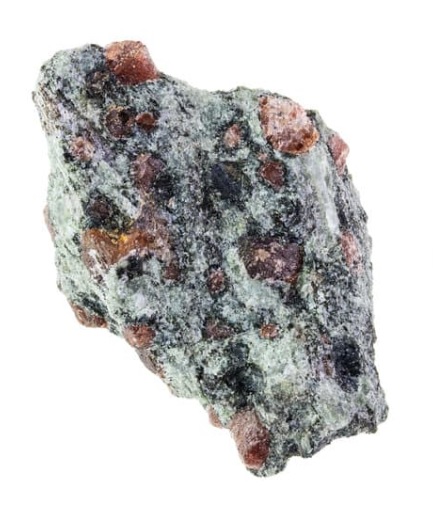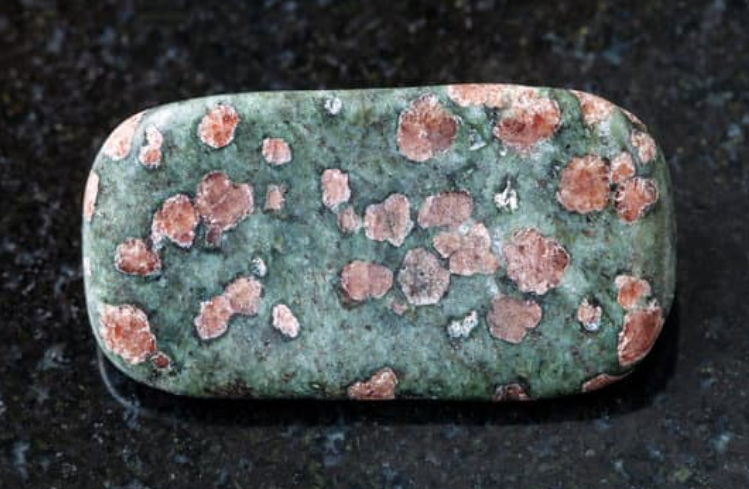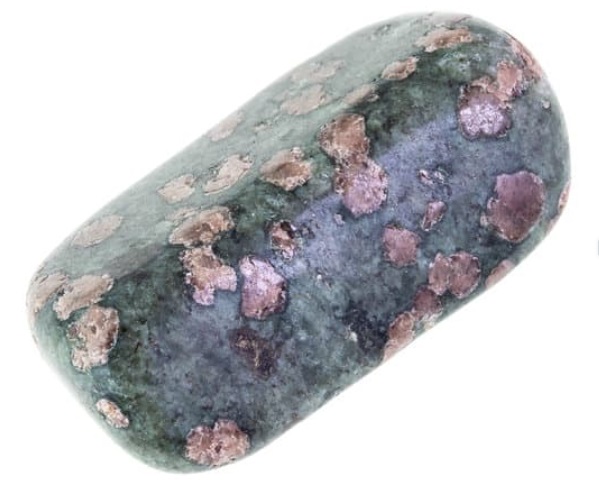Eclogite rock

In the vast realm of geological wonders, one rock that stands out for its intriguing characteristics is Eclogite. This enigmatic rock, composed primarily of green pyroxene and red garnet, often harbors the occasional presence of kyanite crystals. In this comprehensive article, we will explore the various facets of Eclogite, from its texture and origins to its applications and global production statistics.
What is Eclogite rock?
Eclogite, as mentioned earlier, is a remarkable rock known for its distinct composition. It is primarily composed of two key minerals:

- Green Pyroxene: This mineral lends Eclogite its characteristic green coloration. The pyroxene found in Eclogite is typically high in sodium and calcium, making it a significant component of the rock.
- Red Garnet: The presence of red garnet imparts a stunning contrast to the green pyroxene. Garnet is a silicate mineral, and in Eclogite, it often appears in distinctive reddish hues.
Texture of Eclogite rock
Eclogite exhibits a fascinating texture. It falls within the medium- to coarse-grained category, meaning that its mineral grains are discernible to the naked eye. Furthermore, Eclogite may display banding, adding an extra layer of complexity to its visual appeal. This banded appearance results from variations in mineral composition and grain size within the rock.
Origin of Eclogite rock
To truly grasp the essence of Eclogite, we must delve into its remarkable origin story. This rock forms under extreme conditions of both temperature and pressure, typically deep within the Earth’s crust. Here are the key aspects of its origin:

Formation under Extreme Conditions
Eclogite is formed under some of the highest temperature and pressure conditions within the Earth’s crust. The immense pressure and temperature are necessary for the transformation of its parent rock, which is often basalt, into this unique assemblage of minerals.
Association with Peridotites and Serpentinites
Eclogite is often found in close association with two other rock types: peridotites and serpentinites. This geological trio provides valuable insights into the complex processes occurring beneath the Earth’s surface.
- Peridotites: These rocks are rich in olivine and pyroxene minerals and are believed to originate from the Earth’s upper mantle. The proximity of eclogite to peridotite formations suggests a deep-seated connection between the two.
- Serpentinites: Serpentinites, on the other hand, result from the alteration of peridotite rocks through a process known as serpentinization. The coexistence of eclogite and serpentinites hints at the intricate geological processes at play in subduction zones.
Eclogite: Group, Crystal Classification, Shape, and Color
| Aspect | Description |
|---|---|
| Group | METAMORPHIC |
| Origin | Base of crust |
| Grain size | Coarse |
| Classification | Regional |
| Pressure | High |
| Temperature | High |
| Structure | Foliated, Crystalline |
Applications of Eclogite rock
Beyond its aesthetic appeal, Eclogite serves several practical purposes across various industries. Its notable applications include:
1. Jewelry and Gemstones
The striking red garnet found in some eclogite specimens is highly sought after in the jewelry industry. Craftsmen use these gem-quality garnets to create exquisite jewelry pieces.

2. Geological Research
Eclogite plays a crucial role in geological research. Its presence in specific geological settings provides valuable clues about the Earth’s history and tectonic processes, aiding scientists in unraveling the planet’s mysteries.
3. Building Materials
In some regions, eclogite is quarried and used as a construction material. Its durability and attractive appearance make it a preferred choice for architectural projects.
4. Educational Purposes
Eclogite’s unique composition and striking appearance make it an excellent teaching tool in geology classrooms. Students can examine its distinct minerals and textures to better understand metamorphic processes.

Global Production of Eclogite rock
Estimating the exact global production of Eclogite can be challenging due to its relatively limited use as a commercial resource. However, according to the available information, here’s an overview of its production:
| Region | Estimated Production (tons) |
|---|---|
| Europe | 200 – 300 tons annually |
| Asia (primarily China) | 400 – 600 tons annually |
| North America | 100 – 200 tons annually |
| Rest of the World | Varies |
Please note that these figures are approximate and can vary from year to year. Eclogite production is often influenced by regional geological factors, demand for garnets, and the presence of suitable deposits.
Conclusion
In conclusion, Eclogite stands as a testament to the Earth’s remarkable geological processes. With its captivating green and red hues, intriguing texture, and association with deep-seated geological phenomena, it continues to captivate geologists and scientists worldwide. From its applications in jewelry to its role in advancing our understanding of the Earth’s history, Eclogite holds a special place in the world of geology and beyond. As we continue to explore the depths of our planet, this unique rock will undoubtedly reveal more of its secrets in the years to come.
